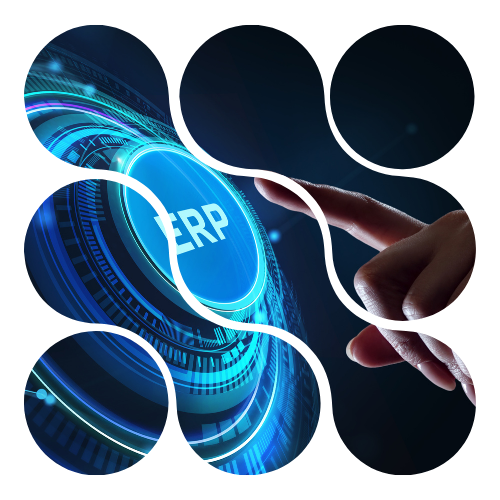How to improve ERP system performance the smart way
Keep your system running at its best with practical strategies that boost performance, reduce friction, and evolve with your business.

Most businesses roll out an ERP system with the best of intentions. You put in the hard work, go live, breathe a sigh of relief… and then? Things start to slip. Performance lags. Processes don’t quite match the way your business works anymore. Users find workarounds. Before you know it, your ERP feels more like a burden than a solution.
This is where continuous improvement comes in. Instead of waiting for things to break, you fine-tune, tweak, and optimise along the way. You stay in control and keep your ERP working as hard as you do. So if you’ve been wondering how to improve ERP system performance without flipping everything upside down, you’re in the right place.

What causes ERP system performance to decline over time?
Even the best ERP systems aren’t immune to wear and tear. It’s not always obvious at first, but over time, small issues stack up. Here’s what typically drags down performance:
- Outdated processes: Your business evolves, but if your ERP workflows don’t keep up, you end up with clunky workarounds and wasted time.
- Poor data hygiene: Duplicate records, inconsistent entries, and bloated databases slow everything down and make reporting a headache.
- Lack of training: New team members may not know how to get the most out of the system, and experienced users might stick to old habits.
- Over-customisation: Too many one-off changes can create a tangled mess behind the scenes, especially during upgrades or integrations.
- Neglected system updates: Skipping patches or major version updates? You could be missing out on essential performance boosts and security fixes.
It’s not just about fixing problems when they pop up. Many performance issues build gradually, and by the time you notice them, they’ve already cost you productivity, accuracy, and sometimes even money.
How can you optimise your ERP system without major disruption?
Improving ERP performance doesn’t have to mean pausing your entire operation or throwing your team into panic mode. The trick is to think small, smart, and strategic. Here’s how to improve ERP system outcomes without overhauling the whole setup:
- Run regular system reviews: Set aside time for quarterly check-ins. Look at performance data, user feedback, and alignment with business processes.
- Tidy up your data: Introduce rules for naming, formatting, and archiving. Clean data makes everything faster, accurate, easier to report.
- Revisit user roles and permissions: Make sure people only see what they truly need. It keeps things secure and makes navigation faster and simpler.
- Invest in ongoing training: Even a 30-minute refresher session can help users find faster ways to get things done. Keep training fun and practical.
- Use performance monitoring tools: Dashboards and alerts can help you quickly spot bottlenecks early before they become major issues in operations.
- Keep customisations under control: Document everything carefully. If a tweak was made five years ago and no one remembers why, that’s a red flag.
- Pilot new features before rolling them out: Avoid surprises by thoroughly testing upgrades or changes with a small, trusted pilot group before going wide.
A well-optimised ERP doesn’t just work better. It feels better to use. It supports your team instead of frustrating them. And it grows with you instead of holding you back.

How does COGTEK support long-term ERP improvement?
At COGTEK, we don’t believe in set-and-forget ERP systems. We work with businesses across Australia to make sure their systems continue to deliver value long after go-live. Whether you’re working with MYOB Acumatica, cloud ERP solutions, or another cloud-based platform, we help you unlock more from what you already have.
Our approach is practical, collaborative, and tailored to your goals. We start by understanding your current setup, pinpointing performance gaps, and identifying opportunities for smarter workflows. Then we work with your team to build a realistic plan that prioritises quick wins and long-term gains, without the chaos.
So if you’re ready to stop wondering how to improve ERP system results and start seeing better outcomes, let’s chat. COGTEK’s here to help you fine-tune, simplify, and evolve your ERP setup with confidence.
How to improve ERP system performance for lasting results
Chat with our team to discover practical strategies that keep your ERP running smoothly, reduce downtime, and adapt as your business grows.
FAQs
Answers to the most frequently asked questions.
How often should we revisit our ERP reporting structure?
It’s a good idea to review your reporting structure every 6 to 12 months or whenever there’s a significant change in your business goals. As your company grows or shifts direction, your reporting needs will evolve too. Regular reviews help ensure you’re tracking what actually matters.
Can ERP systems be customised to support industry-specific requirements?
Yes, many ERP platforms offer modules or add-ons tailored to specific industries like manufacturing, construction, or retail. You can also work with implementation partners to design workflows that reflect your unique processes while keeping the core system stable.
What’s the risk of adding too many third-party integrations?
While integrations can add functionality, too many can create data inconsistencies, slow down your system, or cause compatibility issues during updates. It’s best to keep them purposeful and ensure each integration is well-supported and essential to your workflows.
